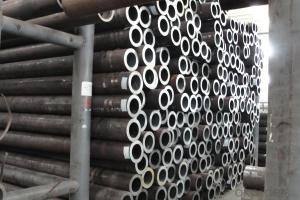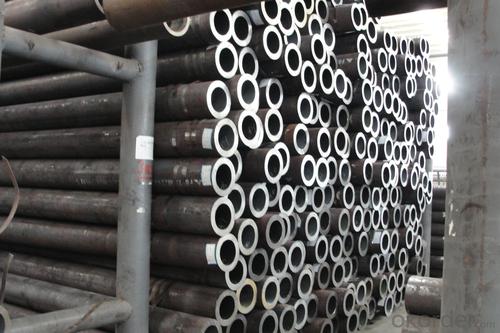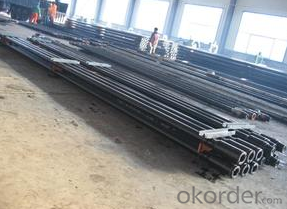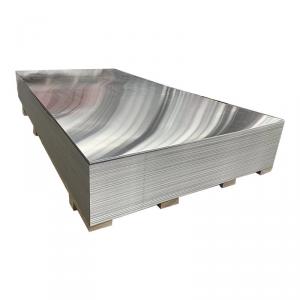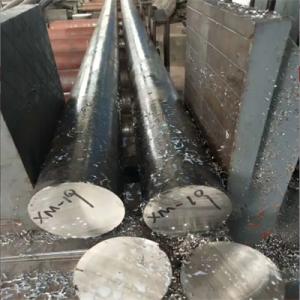60mm-102mm Drill Pipe & API Drill Rod for Cleaning Stainless Steel Header Pipes
- Loading Port:
- China Main Port
- Payment Terms:
- TT or LC
- Min Order Qty:
- 25MT m.t.
- Supply Capability:
- 1000MT m.t./month
OKorder Service Pledge
OKorder Financial Service
You Might Also Like
1. Process of High Quality Drill Rod
1). The performance and advantages: rod tube ends inside and outside thicker type, the joint use of phosphate or plated steel threaded processing.
2). The product uses: down hole drilling operations, to extend the drill footage;
3). Service: home delivery, tracking services;
4). Packing: steel strapping, compartment plate press-fit.
2. Specification High Quality Drill Rod
Size | Normal | Calculated Plain-End weight | Grade | Outside Diam. | Wall Thickness | Upset type | Tool Joint | ||||
in | mm | Lb/ft | Lb/ft | kg/m | Inch | mm | Inch | mm | |||
2-3/8 | 60.3 | 6.65 | 6.26 | 9.32 | E,X,G,S | 2.375 | 60.3 | 0.28 | 7.11 | EU | NC26 |
2 7/8 | 73 | 10.4 | 9.72 | 14.48 | E,X,G,S | 2.875 | 73 | 0.362 | 9.19 | EU IU | NC31 |
3 1/2 | 88.9 | 9.5 | 8.81 | 13.12 | E | 3.5 | 88.9 | 0.254 | 6.45 | EU IU | NC38 |
3 1/2 | 88.9 | 13.3 | 12.31 | 18.34 | E,X,G,S | 3.5 | 88.9 | 0.368 | 9.35 | EU IU | NC38,NC40 |
3 1/2 | 88.9 | 15.5 | 14.63 | 21.79 | E | 3.5 | 88.9 | 0.449 | 11.4 | EU IU | NC38,NC40 |
3 1/2 | 88.9 | 15.5 | 14.63 | 21.79 | X,G,S | 0.449 | 11.4 | EU IEU | |||
4 | 101.6 | 14 | 12.93 | 19.26 | E,X,G,S | 4 | 101.6 | 0.33 | 8.38 | EU IU | NC40,NC46 |
4-1/2 | 114.3 | 13.75 | 12.24 | 18.23 | E | 4.5 | 114.3 | 0.271 | 6.88 | EU IU | NC46,NC50 |
4-1/2 | 114.3 | 16.6 | 14.98 | 22.31 | E,X,G,S | 4.5 | 114.3 | 0.337 | 8.56 | EU IEU | NC46,NC50 |
4-1/2 | 114.3 | 20 | 18.69 | 27.84 | E,X,G,S | 4.5 | 114.3 | 0.43 | 10.92 | EU IEU | NC46,NC50 |
5 | 127 | 16.25 | 14.87 | 22.15 | X,G,S | 5 | 127 | 0.296 | 7.52 | IU | NC50.5,1/2FH |
5 | 127 | 19.5 | 17.93 | 26.71 | E | 5 | 127 | 0.362 | 9.19 | IEU | NC50.5,1/2FH |
5 | 127 | 19.5 | 17.93 | 26.71 | X,G,S | 5 | 127 | 0.362 | 9.19 | EU IEU | NC50.5,1/2FH |
5 | 127 | 25.6 | 24.03 | 35.79 | E | 5 | 127 | 0.5 | 12.7 | IEU | NC50.5,1/2FH |
5 | 127 | 25.6 | 24.03 | 35.79 | X,G,S | 5 | 127 | 0.5 | 12.7 | EU IEU | NC50.5,1/2FH |
3.Strength High Quality Drill Rod
Grade | Yield Strength | Tensile strength | |||||
min | max | min | |||||
Psi | Mpa | Psi | Mpa | Psi | Mpa | ||
1 | E-75 | 75 | 517 | 105 | 724 | 100000 | 689 |
2 | X-95 | 95 | 655 | 125 | 862 | 105000 | 724 |
G-105 | 105 | 724 | 135 | 931 | 115000 | 793 | |
S-135 | 135 | 931 | 165 | 1138 | 145000 | 1000 | |
4.FAQ of High Quality Drill Rod:
①How is the quality of your products?
Our products are manufactured strictly according to national and internaional standard. Guaranteed: If products’ quality don’t accord to discription as we give or the promise before you place order, we promise 100% refund.
②How about price?
Yes, we are factory and be able to give you lowest price below market one, and we have a policy that “ for saving time and absolutely honest business attitude, we quote as lowest as possible for any customer, and discount can be given according to quantity.
③Why should you chose us?
We believe that good quality+good price+good service=customer’s trust
SGS test is available, customer inspection before shipping is welcome, third party inspection is no problem.
6、High Quality Drill Rod Images:
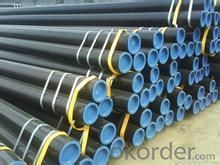
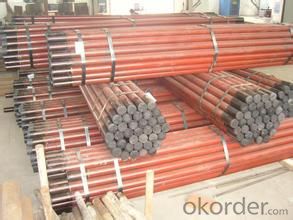
- Q:How are steel pipes used in the construction of geothermal power plants?
- Steel pipes are used in the construction of geothermal power plants primarily for two purposes: transporting geothermal fluids and ensuring the structural integrity of the plant. The pipes are used to extract hot water or steam from the geothermal reservoir deep underground and transport it to the surface. These pipes are designed to withstand high temperatures and pressures associated with geothermal fluids. Additionally, steel pipes are also used to distribute the extracted fluids to various parts of the power plant for electricity generation. Moreover, steel pipes are utilized in the construction of the plant's infrastructure, such as the framework, supports, and other structural components, ensuring the overall stability and durability of the geothermal power plant.
- Q:Outside diameter 60, thickness 3.5 seamless steel tube, how many kilograms per meter?
- Outside diameter 60mm, thickness 3.5mm seamless steel tube per metre weight: 4.88 kg. When calculating the theoretical weight (Kg/m) per metre of steel tube, the theoretical weight meter of the steel tube can be checked directly, and the formula formula can also be used.
- Q:How do steel pipes perform in high-altitude applications?
- Steel pipes perform well in high-altitude applications due to their strength, durability, and resistance to extreme weather conditions. They can withstand the low temperatures and high winds typically found at high altitudes, making them a reliable choice for various industries such as oil and gas, construction, and infrastructure development. Additionally, steel pipes have the ability to maintain their structural integrity under high pressure, making them suitable for transporting fluids and gases at high altitudes.
- Q:How are steel pipes used in the manufacturing of fire sprinkler systems?
- Steel pipes are commonly used in the manufacturing of fire sprinkler systems due to their durability and fire resistance properties. These pipes serve as a reliable conduit for water or fire suppression agents to flow through, ensuring that the sprinkler system effectively extinguishes fires. The high strength of steel pipes allows for the construction of a robust and long-lasting system that can withstand high pressure and heat, making them an ideal choice for fire safety installations.
- Q:Difference between seamless steel pipe and welded pipe
- Welded steel pipe for different welding process and divided into the furnace pipe welding (ERW) pipe and automatic arc welding, because of the different forms of welding seam welded pipe and spiral welded pipe is divided into two kinds, end its shape is divided into circular welded and shaped (square) pipe etc..
- Q:Can steel pipes be used for solar energy systems?
- Yes, steel pipes can be used for solar energy systems. Steel pipes are commonly used for the construction of solar panel mounting structures and the transportation of heated fluids in solar thermal systems. They offer strength, durability, and resistance to high temperatures, making them suitable for various components of solar energy systems.
- Q:What are the common methods for joining steel pipes?
- Different methods exist for joining steel pipes, depending on specific applications and requirements. Some commonly employed techniques include the following: 1. Welding: Among the most frequently used methods to join steel pipes, welding involves heating the pipe ends and applying pressure to fuse them. Various techniques can be employed, such as arc welding, MIG welding, TIG welding, and even laser welding. 2. Threaded connections: This method involves threading the ends of steel pipes to create male and female connections. These threaded ends are then screwed together using pipe threads. Threaded connections are typically utilized for smaller diameter pipes and in low-pressure applications. 3. Flanged connections: Flanges are employed to join steel pipes in situations that necessitate easy assembly and disassembly or frequent maintenance. Flanges are flat, circular discs with bolt holes that allow for the bolting of pipes together. They offer a robust and leak-proof connection. 4. Compression fittings: Compression fittings enable the joining of steel pipes without the need for welding or threading. They consist of a compression nut, compression ring, and compression sleeve. The nut is tightened onto the sleeve, compressing it against the pipe and creating a secure connection. 5. Grooved couplings: Mechanical connections are created with grooved couplings, which are utilized to join steel pipes. The pipe ends are grooved, and a gasket is inserted between the grooves. The couplings are then tightened, compressing the gasket and forming a tight seal. 6. Soldering or brazing: These methods involve the use of filler metal with a lower melting point than the steel pipes. The filler metal is heated and melted, allowing it to flow between the pipe joints and create a bond. Soldering is generally suited for smaller diameter pipes and low-pressure applications. Each joining method has its own advantages and limitations. The appropriate method for joining steel pipes depends on factors such as pipe diameter, application, working pressure, and required joint durability. It is crucial to consider these factors and consult industry standards and guidelines when selecting the suitable joining method for steel pipes.
- Q:What are the common standards for coating and lining of steel pipes?
- The most common standards for coating and lining of steel pipes include the American Petroleum Institute (API) standards such as API 5L, API 5CT, and API 5LD. Other widely recognized standards include the American Water Works Association (AWWA) standards such as AWWA C210 and AWWA C213, as well as the National Association of Corrosion Engineers (NACE) standards such as NACE RP0188 and NACE RP0394. These standards ensure the proper selection, application, and performance of coatings and linings to protect steel pipes from corrosion and other external factors.
- Q:What are the different types of corrosion that can affect steel pipes?
- There are several types of corrosion that can affect steel pipes, including general or uniform corrosion, pitting corrosion, galvanic corrosion, crevice corrosion, and stress corrosion cracking.
- Q:How are steel pipes used in the construction of telecommunications towers?
- Steel pipes are used in the construction of telecommunications towers as they provide structural support and stability. They are used as the main framework for the tower, forming the vertical columns, horizontal bracing, and diagonal supports. These pipes are capable of withstanding heavy loads, high winds, and other environmental factors, ensuring the tower's durability and longevity. Additionally, steel pipes allow for easy installation and maintenance of antennas, cables, and other telecommunications equipment.
1. Manufacturer Overview |
|
|---|---|
| Location | |
| Year Established | |
| Annual Output Value | |
| Main Markets | |
| Company Certifications | |
2. Manufacturer Certificates |
|
|---|---|
| a) Certification Name | |
| Range | |
| Reference | |
| Validity Period | |
3. Manufacturer Capability |
|
|---|---|
| a)Trade Capacity | |
| Nearest Port | |
| Export Percentage | |
| No.of Employees in Trade Department | |
| Language Spoken: | |
| b)Factory Information | |
| Factory Size: | |
| No. of Production Lines | |
| Contract Manufacturing | |
| Product Price Range | |
Send your message to us
60mm-102mm Drill Pipe & API Drill Rod for Cleaning Stainless Steel Header Pipes
- Loading Port:
- China Main Port
- Payment Terms:
- TT or LC
- Min Order Qty:
- 25MT m.t.
- Supply Capability:
- 1000MT m.t./month
OKorder Service Pledge
OKorder Financial Service
Similar products
New products
Hot products
Hot Searches
Related keywords
